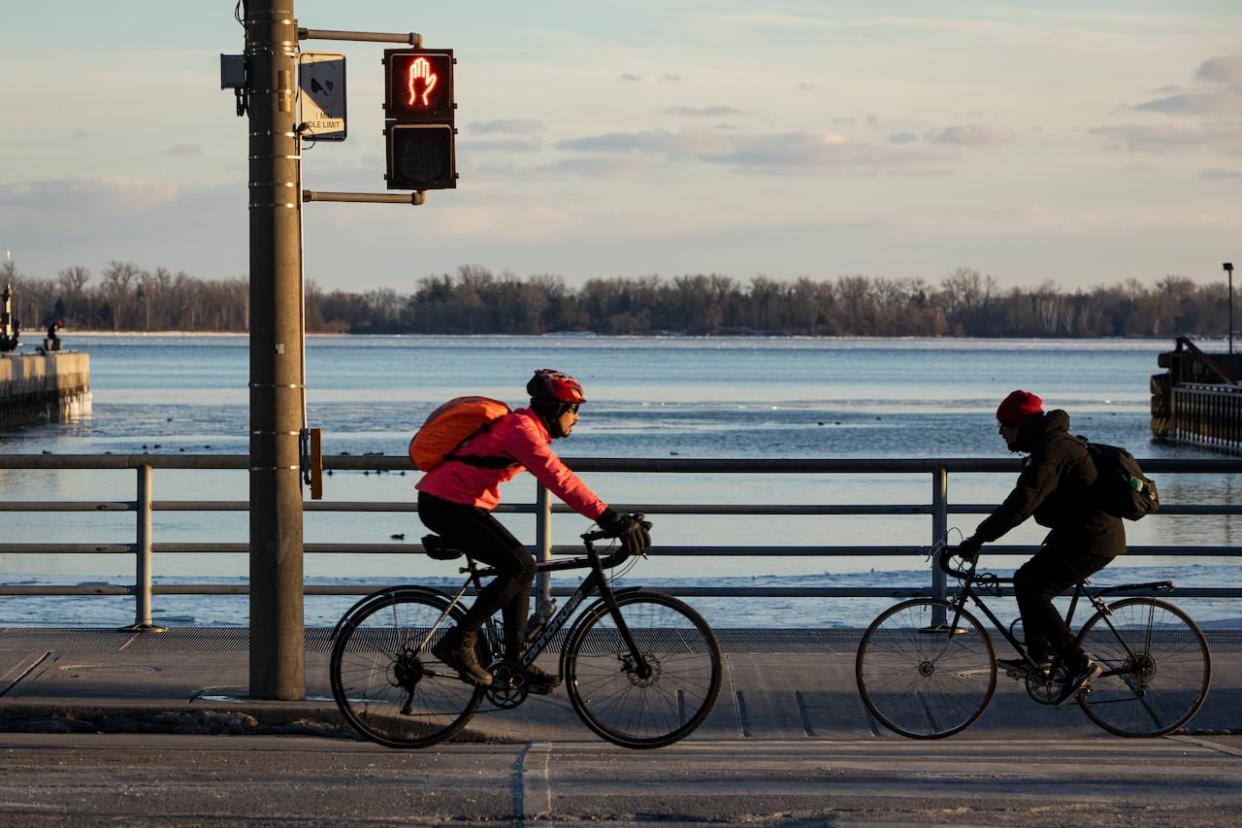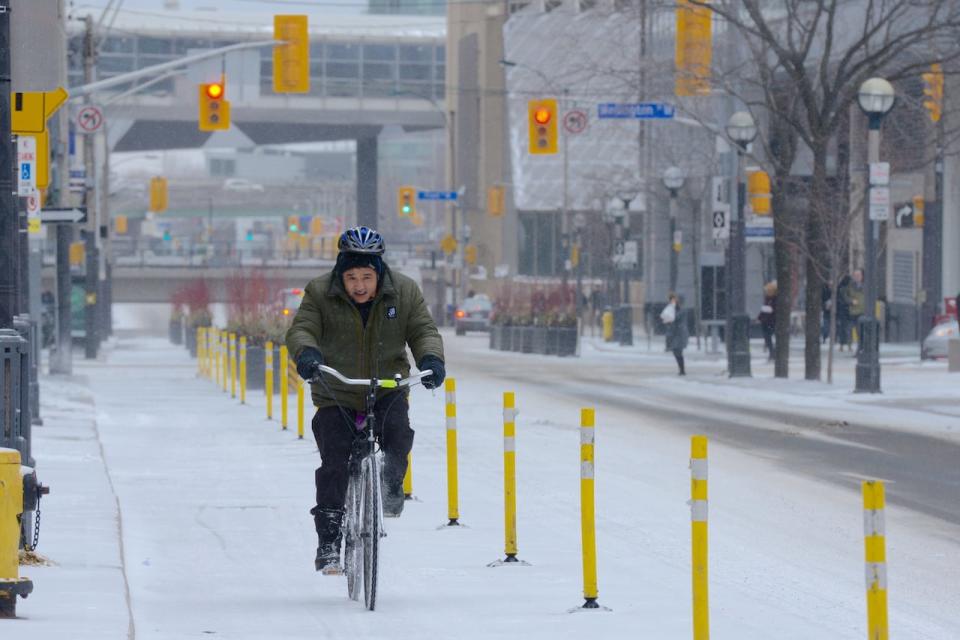More cyclists and pedestrians hurt in Toronto than police data captures, study suggests

Toronto police data only captures a portion of the cyclist and pedestrian injuries that happen in the city each year, according to a new study from York University researchers.
The peer-reviewed study, which was published in the journal Injury Prevention, has implications for both the health-care system and road safety planning, according to its authors.
"This suggests that using police data alone won't provide city planners with an accurate number of cyclists and pedestrians injured on city streets," said lead author Alison Macpherson, professor in the School of Kinesiology and Health Science at York University, in a statement.
"This emphasizes the need for linked health services data and police data to inform planning for road safety."
The study compared pedestrian and cyclist injuries in the city for a five-year period from 2016 to 2021, using data from three sources: Toronto police, emergency room data, and hospitalization data.
Researchers say they found 30,101 emergency department visits for cyclist injuries over that time period in health services data, which included injuries sustained with or without motor vehicle involvement.
Toronto police data captured 2,362 cyclist injuries over the same timeframe, coming in at just under eight per cent of total emergency department visits.
Results not a shock, researcher says
In a statement sent to CBC News, Toronto police spokesperson Stephanie Sayer said the force is ensuring its data is available for study and analysis. She also said the service's public safety data portal is reflective of information reported to police, and also includes data provided by the city of Toronto.
"We encourage members of the public to report all collision incidents to TPS as road safety is improved through evidence-based design," Sayer said.
In an interview, Macpherson said she wasn't shocked that police data underrepresented the the true scope of injuries on Toronto's streets.
"Because that's not their purpose, right? Their purpose is to respond to calls and do their job," she said.

The study compared pedestrian and cyclist injuries in the city for a five-year period from 2016 to 2021. It was requested by the city's transportation department. (Mike Heenan/CBC)
The police data did improve, however, when looking specifically at pedestrian incidents and cyclist collisions that involved a motor vehicle.
The study found police data represented 53.7 per cent of emergency department visits and 48.4 per cent of hospitalizations for pedestrians, as well as 58.8 per cent of emergency department trips and 52.6 per cent of hospitalizations for cyclists when a motor vehicle was involved.
City using data to inform infrastructure decisions
The study's authors also note a limitation as the datasets involved weren't designed to capture the same exact same things. Police-reported data only includes injuries where police have been called, and includes both Toronto residents and non-residents.
The health services databases, meanwhile, include all cyclist and pedestrian injuries, which were limited by the authors to residents of the city and its inner suburbs who were treated at Toronto hospitals.
"The high rates of serious cycling injuries that don't involve motor vehicles may point to changes that are needed in the built environment," said senior author Linda Rothman, assistant professor for the School of Occupational and Public Health at Toronto Metropolitan University, in a statement.
"This could include roadway and cycle track maintenance or necessary upgrades to off-road trails and pathways."
In a statement, the City of Toronto said that while police data largely focuses on crashes including vehicles, it also offers "valuable insight" into the circumstances of those incidents and where they happen.
The study also shows Toronto would benefit from examining emergency department data, the city says, as it provides clarity on frequency of crashes and types of injuries sustained — but doesn't include information about where they happened.
"It also provides an opportunity for the city to be informed of injuries that were not reported to police," the statement reads.
University-Rosedale Coun. Dianne Saxe told CBC News that the city needs to prioritize making cycling infrastructure and sidewalks safer, because injuries become more likely every time it skips out on maintenance.
"Because the city has been on starvation budget for the last 13 years, we've allowed our infrastructure to fall apart around us — and even the current city budget still forecasts that the physical structure of our city is going to be increasingly falling apart year after year," Saxe said in an interview.
Every time the city doesn't properly fund and maintain infrastructure, she said, "we increase our long-term costs … and we adversely affect people's lives, and all of these accidents are a real sign of that."
Macpherson said she hopes the study will eventually help make walking and cycling safer in Toronto.
"It's important to be able to walk and bike around the city. It's sustainable, it's better for the environment, it's better for people," she said.
"So understanding what the burden is really is the first step in trying to make it easier for everybody to be active, healthy and safe."

